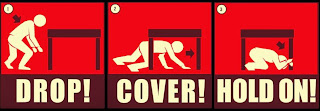We are exploring earthquakes and what countries do to prevent/mitigate the hazard. If I want to know something about earthquakes in a place, the first websites I go to are: the USGS Real Time Earthquakes Website or the IRIS monitoring website.
Saturday, August 31, 2024
Week 3: Earthquakes
Saturday, August 24, 2024
Week 2: Tectonic Plates and Boundaries
This week we are exploring Plate Tectonics and how important it is to know the location of the plate boundaries, and how it is closely related to some natural hazards, like volcanoes or earthquakes.
Sunday, August 18, 2024
Week 1 (Geol9): introducing the US
Hello Geol9,
Welcome to class.
During the semester, we will all explore the natural hazards of numerous countries around the world, why they happen, and what mitigation and adaptation measures we have in place to help manage them.
As my students learn about all this, I'll be blogging alongside them using the US as an example.
The Unites States of America is primary located in North America and the third largest country of the world by land and total area. The U.S. consists of 50 states, a federal district, five major unincorporated territories, nine Minor Outlying Islands and includes 326 Indian reservations (see its map below). Its population in 2022 was 333.3 million!
Students this week will learn the differences between a natural hazard, a catastrophe, and a disaster.
It will be fun exploring all its natural hazards with you!- Stay tuned...



